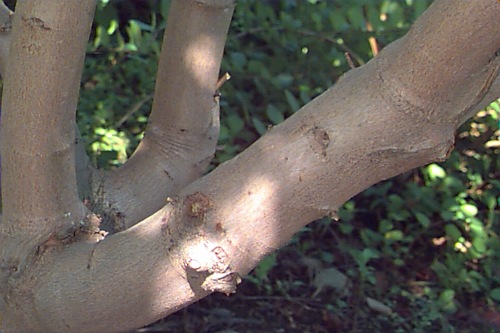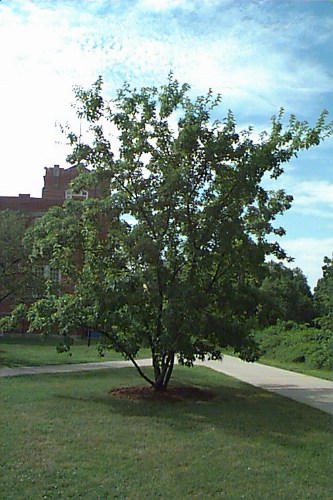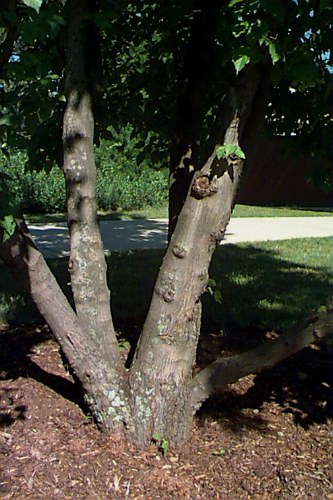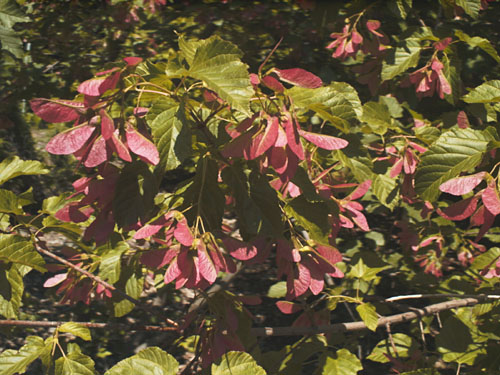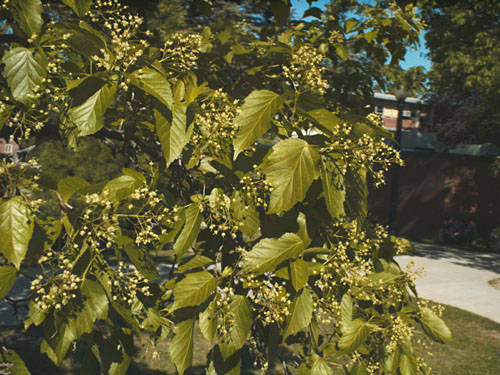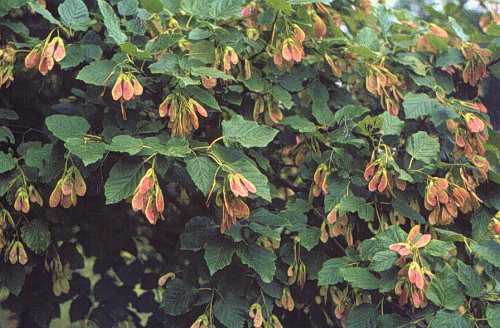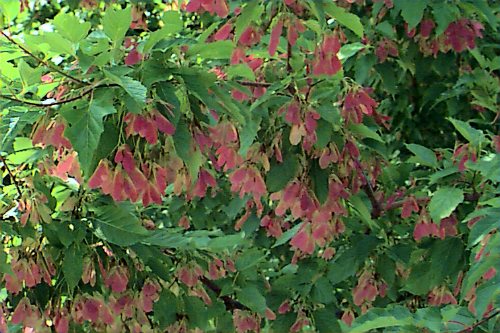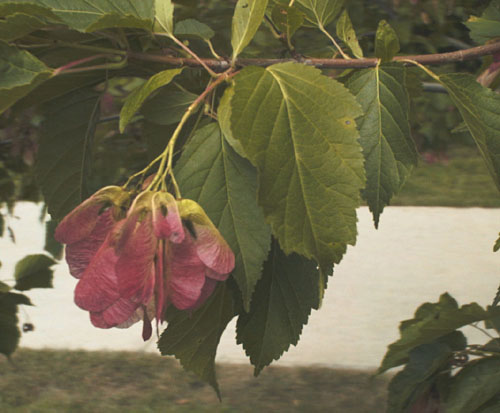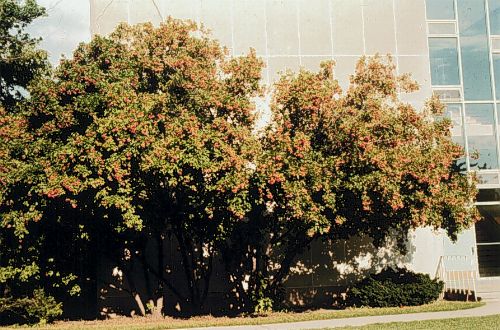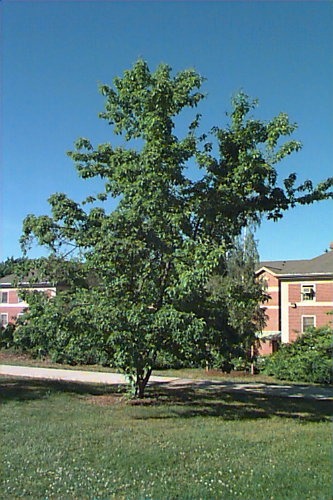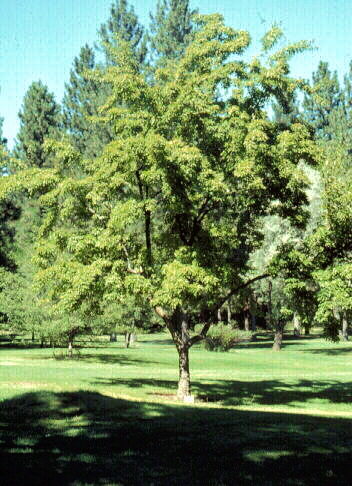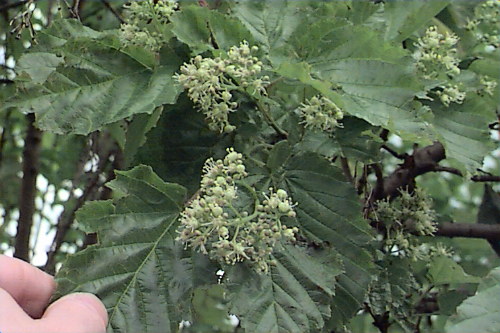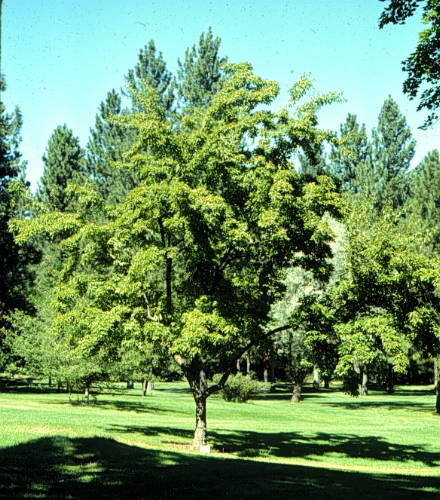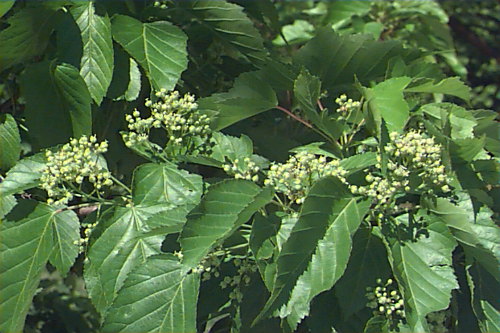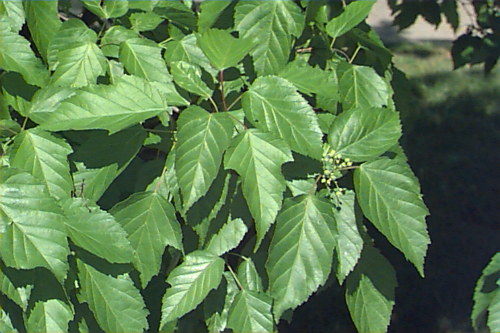Acer tataricum
Tatarian Maple
Aceraceae
ExpandHabitat
- southeastern Europe and western Asia
- hardy to zone 3
- Special Note: This species has demonstrated an invasive tendency in Connecticut, meaning it may escape from cultivation and naturalize in minimally managed areas. For more information, .
Habit and Form
- deciduous
- a large multistemmed shrub or more often a small tree
- 15' to 20' or more
- medium texture
- round to wide spreading outline
- slow to medium growth rage
Summer Foliage
- opposite, 2" to 4" long
- 3-lobed, but central lobe is much larger than side lobes. Leaves of mature tree nearly unlobed.
- medium to dark green, high quality
Autumn Foliage
- mix of yellow and red
- leaves color and drop early
Flowers
- somewhat ornamental
- greenish-white in April-May
- in 2" to 3" panicles
Fruit
- 0.75" to 1" long samaras
- typically numerous and showy during August
- red and lasting almost a month before turning brown
Bark
- similar to Acer ginnala
- smooth gray on young branches
- textured gray on old trunks
Culture
- easily transplanted
- adaptable
- full sun is best, but can take some light shade
- performs well in cold climates
Landscape Uses
- specimen
- patio or small residence tree for shade
- planter boxes
- mini-groves or groupings
- could be used more than it is
- possibly a street tree
- excellent
Liabilities
- no serious problems
- may produce unwanted seedlings
ID Features
- distinctive leaf shape for a maple
- lack of a terminal bud
- similar leaves to Acer ginnala, but leaves are broader, almost heart-shaped.
Propagation
- by seed
- can also be done by softwood or semihardwood cuttings
Cultivars/Varieties
- none of commercial significance


